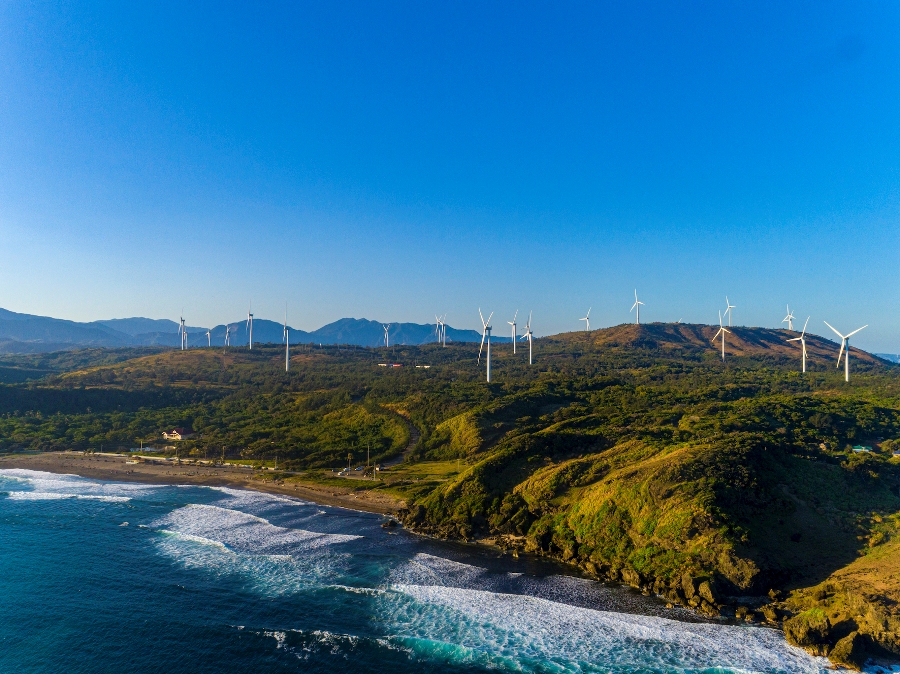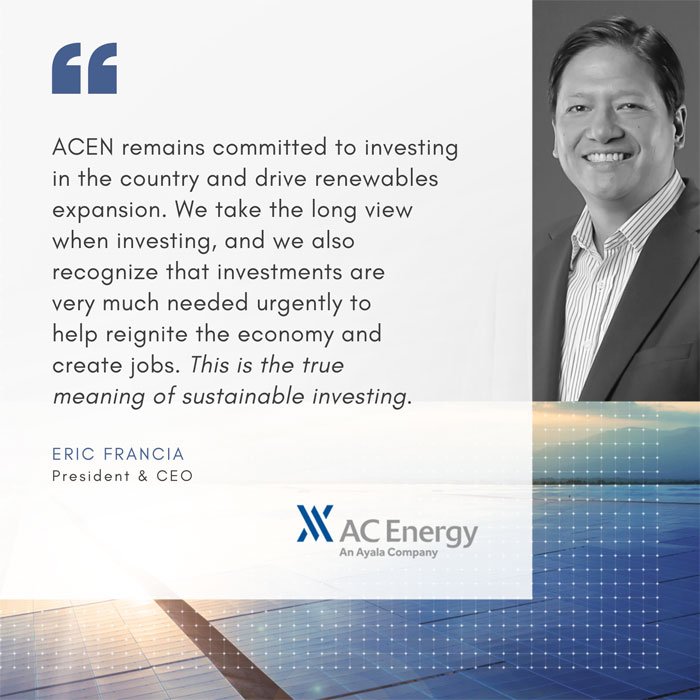Striking the energy balance
By Adrian Paul B. Conoza, Special Features Writer
IN THE ENERGY sector, there is an apparent balance to be met between addressing energy security and tapping further renewable energy (RE) resources. This was recently expressed by Department of Energy (DoE) Secretary Alfonso G. Cusi in reaffirming his commitment to the full implementation of the Renewable Energy Act.
“I fully support the development and utilization of our renewable resources — but without sacrificing the attainment of our energy security,” Mr. Cusi stressed in a statement, adding that with the current energy situation leaving “much to be desired”, all power sourcing should be considered.
In DoE’s “Energy Situationer” published in 2017, oil was found to have contributed the most in the total primary energy supply (TPES), accounting for about a third of the supply, followed by coal, which contributed 26.7% of TPES.
More recently, DoE’s power statistics in 2019 showed coal tallying the highest total power generation in the Philippines, with 57,890 gigawatt hours (GWh), followed by coal with 22,354 GWh. In terms of installed generating capacity and dependable generating capacity, coal remains the highest, with 10,417 megawatts (MW) and 9,743 MW, respectively.
As leading companies in the sector see it, there is much to do in meeting the country’s energy needs with sustainable resources.
“[T]he regulatory environment is still not ideal for renewable energy. Yet, we remain hopeful. We believe that it is only a matter of time before this improves,” Francis Giles B. Puno, First Gen Corporation’s president and chief operating officer, pointed out in the company’s 2019 Integrated Report. “Several government policies and legislations have already been enacted, and it is every stakeholder’s role to respond firmly and be consistent in shifting to low carbon energy.”
Meanwhile, John Eric T. Francia, president and chief executive officer of AC Energy, noted that investing in long-term capacity is needed to deal with the country’s “tight power supply situation”.
“[T]here remains an imperative to invest in long term capacity, especially with the impending decline in Malampaya output. It is critical to complete Competitive Selection Process soon, to enable major greenfield investments,” Mr. Francia told BusinessWorld in an e- mail.
He added that unlocking the potential of renewables also requires more expedient land conversion process, timely upgrading of the grid, and incorporating battery storage in the grid when the technology becomes scalable and economically viable.
RENEWABLE ENERGY
When the Renewable Energy Act was passed in 2008, Mr. Francia shared, renewables accounted for 34% of energy output. Yet, more than 80% of the new capacity in the past decade came from thermal plants. As such, renewables’ share of output dropped to 21% in 2019.
The National Renewable Energy Plan, however, calls for RE output to go back to 35% by 2030. “To achieve this goal, we estimate that the country needs to build 15-20 GW of new renewables capacity in the next decade, which will require the grid to be strengthened,” the AC Energy president explained.
In addition, Mr. Francia noted that the government has made good progress in implementing the Renewable Portfolio Standards (RPS), which the government is planning to conduct a ‘green auction’ to aggregate the demand for green energy among several utilities.
“This initiative is an important enabler for the RPS policy and help address the supply-demand gap in three to four years,” he said.
In his statement last July, Mr. Cusi reported that DoE has awarded 472 RE service contracts, with a potential capacity of 20 gigawatts. This, in turn, may translate to an additional 8% RE share to the country’s TPES, which Mr. Cusi finds to be higher than the country’s indicative and committed coal plants for the same period, which has a potential capacity of 14.5 GW. On the side of companies, the move for sustainable energy and even beyond is evident in their recent actions.
Driven by its renewed mission “to forge collaborative pathways for a decarbonized and regenerative future”, First Gen gears up to accelerate the transition to RE. “First Gen’s clean and flexible gas portfolio is a pioneer in the country and is well-positioned to help with the transition,” Mr. Puno said.
As a leading renewable energy company, Mr. Puno said First Gen will deploy its extensive experience in geothermal in order to expand its use. Recognizing the variability and intermittency of some resources, the company also aims to expand its hydro platform through the development of the 100-MW Aya Pumped-Storage facility, capable of providing energy during peak periods and storing energy during off-peak periods.
Also, First Gen’s pioneering of liquefied natural gas (LNG) to the country continues to progress with a groundbreaking with partner Tokyo Gas and the completion of a study on modifying its existing jetty at the First Gen Clean Energy Complex in Batangas City. “Introducing LNG to the country allows us to support and boost the growth of variable renewable energy sources like wind, solar, and hydro,” Mr. Puno noted.
Meanwhile, AC Energy also expressed its support in helping the country achieve secured and sustainable energy. “AC Energy intends to play a leading role in scaling up renewables capacity and transitioning the country to a low carbon economy,” Mr. Francia said.
AC Energy, he added, is fully committed in growing renewables in the country. “The company currently has 447 MW of attributable renewables capacity in the Philippines, and we expect this number to grow to over 2000 MW by 2025,” the CEO said. “This means that the company is expected to build an average of at least 300 MW of renewables capacity (mostly solar and wind) per year in the next five years.”
Another player in the sector, Aboitiz Power Corporation, is also aiming to transition to renewable and clean energy, as stated in the latest integrated report of Aboitiz Equity Ventures.
Emmanuel V. Rubio, Aboitiz Power’s president and CEO, and Erramon I. Aboitiz, outgoing president and CEO, noted in the report the company’s increased generation capacity with the commercial operation of new facilities, among them the 19-MW La Trinidad Hydro in Benguet and a 200-kilowatt pilot floating project in Isabela launched by subsidiary SN Aboitiz Power.
“We will aggressively expand our Cleanergy portfolio to optimize opportunities from the implementation of the government’s Renewable Portfolio Standards (RPS) and the Green Energy Option Program (GEOP), while selectively building baseload capacities to support our country’s growth aspirations,” the executives added.






